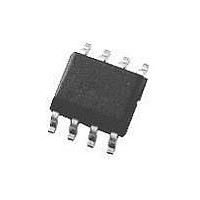LMV722MM National Semiconductor, LMV722MM Datasheet - Page 10

LMV722MM
Manufacturer Part Number
LMV722MM
Description
IC, OP-AMP, 10MHZ, 5.25V/µs, MSOP-8
Manufacturer
National Semiconductor
Datasheet
1.LMV722MM.pdf
(16 pages)
Specifications of LMV722MM
Op Amp Type
Low Power
No. Of Amplifiers
1
Bandwidth
10MHz
Slew Rate
5.25V/µs
Supply Voltage Range
2.2V To 5.5V
Amplifier Case Style
MSOP
No. Of Pins
8
Lead Free Status / RoHS Status
Contains lead / RoHS non-compliant
Available stocks
Company
Part Number
Manufacturer
Quantity
Price
Company:
Part Number:
LMV722MM
Manufacturer:
NS
Quantity:
2 005
Company:
Part Number:
LMV722MM
Manufacturer:
NS
Quantity:
2 700
Company:
Part Number:
LMV722MM
Manufacturer:
NS
Quantity:
2 100
Company:
Part Number:
LMV722MM
Manufacturer:
NSC
Quantity:
1 300
Part Number:
LMV722MM
Manufacturer:
NS/国半
Quantity:
20 000
Company:
Part Number:
LMV722MM/NOPB
Manufacturer:
TI
Quantity:
11 700
Part Number:
LMV722MM/NOPB
Manufacturer:
NS/国半
Quantity:
20 000
Part Number:
LMV722MMX
Manufacturer:
TI/德州仪器
Quantity:
20 000
Part Number:
LMV722MMX/NOPB
Manufacturer:
NS/国半
Quantity:
20 000
www.national.com
4.0 TYPICAL SINGLE-SUPPLY APPLICATION CIRCUITS
4.1 Difference Amplifier
The difference amplifier allows the subtraction of two voltages
or, as a special case, the cancellation of a signal common to
two inputs. It is useful as a computational amplifier, in making
a differential to single-ended conversion or in rejecting a com-
mon mode signal.
4.2 Instrumentation Circuits
The input impendance of the previous difference amplifier is
set by the resistor R
lems of low input impendance, one way is to use a voltage
follower ahead of each input as shown in the following two
instrumentation amplifiers.
4.2.1 Three-op-amp Instrumentation Amplifier
The LMV721/722 can be used to build a three-op-amp instru-
mentation amplifier as shown in Figure 6
FIGURE 4. Cancelling the Error Caused by Input Bias
FIGURE 5. Difference Application
1
, R
2
, R
Current
3
and R
4
. To eliminate the prob-
10092220
10092221
10
The first stage of this instrumentation amplifier is a differential-
input, differential-output amplifier, with two voltage followers.
These two voltage followers assure that the input impedance
is over 100MΩ. The gain of this instrumentation amplifier is
set by the ratio of R
R
good CMRR over temperature, low drift resistors should be
used. Making R
pot equal to twice the difference between R
the CMRR to be adjusted for optimum.
4.2.2 Two-op-amp Instrumentation Amplifier
A two-op-amp instrumentation amplifier can also be used to
make a high-input impedance DC differential amplifier (Figure
7). As in the two-op-amp circuit, this instrumentation amplifier
requires precise resistor matching for good CMRR. R
equal to R
4.3 Single-Supply Inverting Amplifier
There may be cases where the input signal going into the
amplifier is negative. Because the amplifier is operating in
single supply voltage, a voltage divider using R
implemented to bias the amplifier so the input signal is within
the input common-common voltage range of the amplifier.
The capacitor C
resistor R
source, V
quency, fc = ½
As a result, the output signal is centered around mid-supply
(if the voltage divider provides V
2
. Matching of R
FIGURE 6. Three-op-amp Instrumentation Amplifier
FIGURE 7. Two-op-amp Instrumentation Amplifier
1
IN
1
. The values of R
to block the DC signal going into the AC signal
and R
π
4
1
R
3
slightly smaller than R
3
is placed between the inverting input and
1
to R
should equal R
C
2
1
/R
.
1
1
. R
and R
3
should equal R
1
4
+
and C
/2 at the non-inverting input).
to R
2
.
2
affects the CMRR. For
1
affect the cutoff fre-
2
and adding a trim
2
and R
1
and R
3
4
and R
will allow
4
10092230
4
should
10092222
equal
4
is











